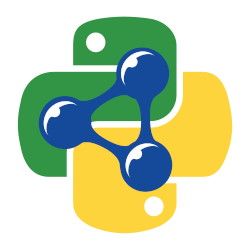Utilities & convenience functions¶
For RDF programming, RDFLib and Python may not be the fastest tools, but we try hard to make them the easiest and most convenient to use and thus the fastest overall!
This is a collection of hints and pointers for hassle-free RDF coding.
Functional properties¶
Use value() and
set() to work with functional
property instances, i.e. properties than can only occur once for a resource.
from rdflib import Graph, URIRef, Literal, BNode
from rdflib.namespace import FOAF, RDF
g = Graph()
g.bind("foaf", FOAF)
# Add demo data
bob = URIRef("http://example.org/people/Bob")
g.add((bob, RDF.type, FOAF.Person))
g.add((bob, FOAF.name, Literal("Bob")))
g.add((bob, FOAF.age, Literal(38)))
# To get a single value, use 'value'
print(g.value(bob, FOAF.age))
# prints: 38
# To change a single of value, use 'set'
g.set((bob, FOAF.age, Literal(39)))
print(g.value(bob, FOAF.age))
# prints: 39
Slicing graphs¶
Python allows slicing arrays with a slice object, a triple of
start, stop and step-size:
for i in range(20)[2:9:3]:
print(i)
# prints:
# 2, 5, 8
RDFLib graphs override __getitem__ and we pervert the slice triple
to be a RDF triple instead. This lets slice syntax be a shortcut for
triples(),
subject_predicates(),
__contains__(), and other Graph query-methods:
from rdflib import Graph, URIRef, Literal, BNode
from rdflib.namespace import FOAF, RDF
g = Graph()
g.bind("foaf", FOAF)
# Add demo data
bob = URIRef("http://example.org/people/Bob")
bill = URIRef("http://example.org/people/Bill")
g.add((bob, RDF.type, FOAF.Person))
g.add((bob, FOAF.name, Literal("Bob")))
g.add((bob, FOAF.age, Literal(38)))
g.add((bob, FOAF.knows, bill))
print(g[:])
# same as
print(iter(g))
print(g[bob])
# same as
print(g.predicate_objects(bob))
print(g[bob: FOAF.knows])
# same as
print(g.objects(bob, FOAF.knows))
print(g[bob: FOAF.knows: bill])
# same as
print((bob, FOAF.knows, bill) in g)
print(g[:FOAF.knows])
# same as
print(g.subject_objects(FOAF.knows))
See examples.slice for a complete example.
Note
Slicing is convenient for run-once scripts for playing around
in the Python REPL, however since slicing returns
tuples of varying length depending on which parts of the
slice are bound, you should be careful using it in more
complicated programs. If you pass in variables, and they are
None or False, you may suddenly get a generator of
different length tuples back than you expect.
SPARQL Paths¶
SPARQL property paths are possible using
overridden operators on URIRefs. See examples.foafpaths and
rdflib.paths.
Serializing a single term to N3¶
For simple output, or simple serialisation, you often want a nice
readable representation of a term. All terms (URIRef, Literal etc.) have a
n3, method, which will return a suitable N3 format:
from rdflib import Graph, URIRef, Literal
from rdflib.namespace import FOAF
# A URIRef
person = URIRef("http://xmlns.com/foaf/0.1/Person")
print(person.n3())
# prints: <http://xmlns.com/foaf/0.1/Person>
# Simplifying the output with a namespace prefix:
g = Graph()
g.bind("foaf", FOAF)
print(person.n3(g.namespace_manager))
# prints foaf:Person
# A typed literal
l = Literal(2)
print(l.n3())
# prints "2"^^<http://www.w3.org/2001/XMLSchema#integer>
# Simplifying the output with a namespace prefix
# XSD is built in, so no need to bind() it!
l.n3(g.namespace_manager)
# prints: "2"^^xsd:integer
Parsing data from a string¶
You can parse data from a string with the data param:
from rdflib import Graph
g = Graph().parse(data="<a:> <p:> <p:>.")
for r in g.triples((None, None, None)):
print(r)
# prints: (rdflib.term.URIRef('a:'), rdflib.term.URIRef('p:'), rdflib.term.URIRef('p:'))
Command Line tools¶
RDFLib includes a handful of commandline tools, see rdflib.tools.
